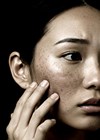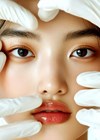Features
The role of topical peptides in skincare
The sustained global interest in regenerative medicine is evident and increasingly aligned to the emerging field of regenerative aesthetics [1]. Arguably, regenerative medicine is an established and evolving specialism of medicine, and the rise of associated medical aesthetic treatments and...
Botulinum toxin type A for the treatment of allergic & idiopathic rhinitis: The Aller-Tox™ method
Hay fever provides a significant burden on the NHS, according to NHS data, approximately 20% of UK residents are hay fever sufferers. Around one fifth of these patients with allergies struggle with the fear of a possible asthma attack [1]....
Discover the AMWC Aesthetics Medicine Awards winners
In collaboration with the Aesthetic Multispecialty Society (AMS), the 2025 AMWC Awards meticulously evaluated more than 1000 submissions hailing from 39 countries, contending for top accolades in categories across Best Products & Devices and Best Clinical Cases. Following an exhaustive...
OPINION - From ethics to commerce: challenges faced by cosmetic practice for 2025 and beyond
Cosmetic medicine and surgery have seen remarkable and ongoing increases in popularity, reflecting advancements in medical technology and evolving societal norms based on, for example, social media, cultural expectations, and globalisation of beauty standards. Unlike with other medical specialties, these...
The impact of 21st century stressors and lifestyle factors on skin ageing
Skin appearance and health play a significant role in everyone’s life and confidence, particularly in today’s 21st century lifestyle and the associated stressors promoting skin ageing. The skin is a dynamic organ, showing apparent signs of ageing and damage, which...
Polynucleotides: A scientific explanation
This article has been verified for CPD. Click the button below to answer a few short questions and download a form to be included in your CPD folder. Introduction and background This article offers an objective analysis of a new...
The new era of advanced AI-powered aesthetics
“AI is the most powerful technology force of our time.” Jensen Huang, Nvidia CEO. The 101 on AI Artificial intelligence (AI) is set to redefine our social, economic and healthcare infrastructure. Artificial intelligence represents machine learning designed to be intuitive...
What to look for in new exosome products: A guide to the exosome cosmetic market
Exosomes have become increasingly trendy in the cosmeceutical market, not only as the latest buzzword but also in alignment with the growing trend towards natural beauty. By harnessing the regenerative potential of exosomes and incorporating them into daily skincare routines...
Threads in rhinoplasty: to thread or not to thread?
Polydioxanone (PDO) and poly-L-lactic / poly-caprolactone (PLL / PCL) threads are presently accessible for facial rejuvenation, and they enjoy significant popularity within aesthetic clinics worldwide, especially in Southeast Asia [1–3]. Often proposed as risk-free with minimal downtime, these threads now...
Runny nose after nonsurgical rhinoplasty – review of cases
Hyaluronic acid filler injections have become a popular procedure worldwide; according to the American Society of Plastic Surgeons (ASPS) from 2019 to 2022 filler procedures have increased by 70% [1]. Non-surgical rhinoplasty is becoming a popular procedure because of the...
Mandibular asymmetry: Importance of personalised treatment
This article has been verified for CPD. Click the button below to answer a few short questions and download a form to be included in your CPD folder. Human facial symmetry is a key determinant for assessing facial attractiveness, and...
Enhancing safety in upper face injections: Anatomical considerations for precision and efficacy
The upper face, including forehead and temples, is often overlooked in non-surgical cosmetic procedures with dermal fillers. While horizontal forehead or glabella lines may be a common complaint amongst patients, seldom do they attend with concerns of loss of volume...
















